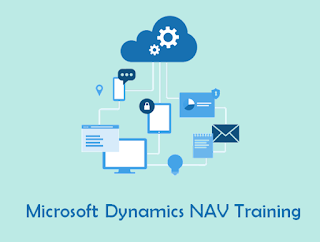Learn Overview of Puppet - Best Puppet Tutorials
Puppet is an open source systems management tool for centralizing and automating configuration management. Configuration management is the detailed recording and updating of information that describes an enterprise's hardware and software.
Puppet has two layers: a configuration language to describe how the hosts and services should look, and an abstraction layer that allows the administrator to implement the configuration on a variety of platforms, including Unix, Linux, Windows and OS X.
Puppet has two layers: a configuration language to describe how the hosts and services should look, and an abstraction layer that allows the administrator to implement the configuration on a variety of platforms, including Unix, Linux, Windows and OS X.
What is puppet making?
A puppet is an object, often resembling a human, animal or mythical figure, that is animated or manipulated by a person called a puppeteer. The puppeteer uses movements of their hands, arms, or control devices such as rods or strings to move the body, head, limbs, and in some cases the mouth and eyes of the puppet.
What are puppets used for?
Puppetry is a form of theatre or performance that involves the manipulation of puppets—inanimate objects, often resembling some type of human or animal figure, that are animated or manipulated by a human called a puppeteer. Such a performance is also known as a puppet play.
Puppet Overview
Puppet is written in Ruby language and was developed by Puppet Labs, founded by Luke Kanies in 2005. Currently Puppet is supported by Puppet Labs and it is licensed under GPLv2 until version 2.7.0 and Apache 2.0 license after that. Puppet is involved in scripting of deployment of production system.
Puppet is used to control an entire server starting from installation, configuration, managing, and maintaining server. Puppet can manage thousands of hosts. Install Puppet agent on hosts and then define the hosts in Puppet master server. All other tasks like installation, configuration, and so on will be done by Puppet automatically.
Puppet Training is opted for quick and fast deployment of business applications both on-premise and in the cloud as it can quickly scale from tens of servers to thousands.
What are the different types of puppets?
The main types of puppets are:
Finger Puppet.
Pop-up Puppet.
Paddle Puppet.
Jumping Jack.
Hand Puppet.
Rod Puppet and Bunraku.
Shadow Puppet.
Hand and Rod Puppet.
Why Puppet?
Puppet lets any business to achieve and manage its infrastructure completely.
- Infrastructure configurations can be broken down into components.
- Modules in Puppet typically breakdown to classes and resources.
- Puppet builds a dependency graph with lot of unique features in the background.
- In puppet, resource dependencies are always explicit.
Features of Puppet
Idempotency, One big difference between Puppet real time scenarios and most other tools is that Puppet configurations are idempotent, meaning they can safely be run multiple times. Once you develop your configuration, your machines will apply the configuration often – by default, every 30 minutes – and Puppet will only make any changes to the system if the system state does not match the configured state.
If you tell the system to operate in no-op (“aka dry-run”), mode, using the –noop argument to one of the Puppet tools, puppet will guarantee that no work happens on your system. Similarly, if any changes do happen when running without that flag, puppet will ensure those changes are logged. Because of this, you can use Puppet to manage a machine throughout its life cycle – from initial installation, to ongoing upgrades, and finally to end-of-life, where you move services elsewhere.
Unlike system install tools like Sun’s Jumpstart or Red Hat’s Kickstart, Puppet configurations can keep machines up to date for years, rather than just building them correctly only the first time and then neccessitating a rebuild. Puppet users usually do just enough with their host install tools to boostrap Puppet, then they use Puppet to do everything else.
What projects are included in puppet Course?
An in-depth knowledge of a Puppet project ensures all the critical components are well-covered. With this knowledge, you can increase your visibility and enhance your efficiency in drawing real connections among different components of Puppet. We will also provide the complete material covering all the aspects of this project.
Why to Choose Mindmajix?
Mindmajix is creating and shaping brilliant minds that are efficient and versatile to scale greater heights in the present technological world. Classes are conducted by Certified Puppet Working Professionals with 100 % Quality Assurance. With an experienced Certified practitioner who will teach you the essentials you need to know to kick-start your career on Puppet. Our training make you more productive with your Puppet Online Training. Our training style is entirely hands-on.
Click for more details: learning puppet tutorial
Contact Details:
INDIA: +91-9246333245; USA: +1-201 3780 518
Email: info@mindmajix.com
Website: https://mindmajix.com/


Comments
Post a Comment